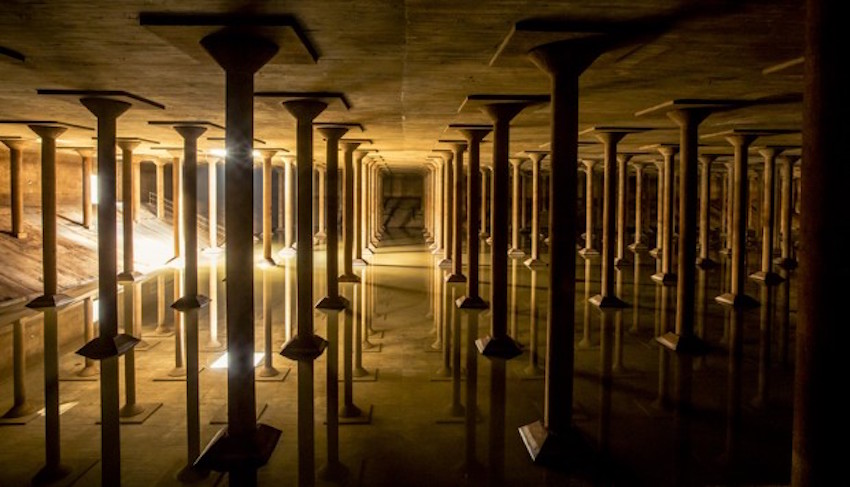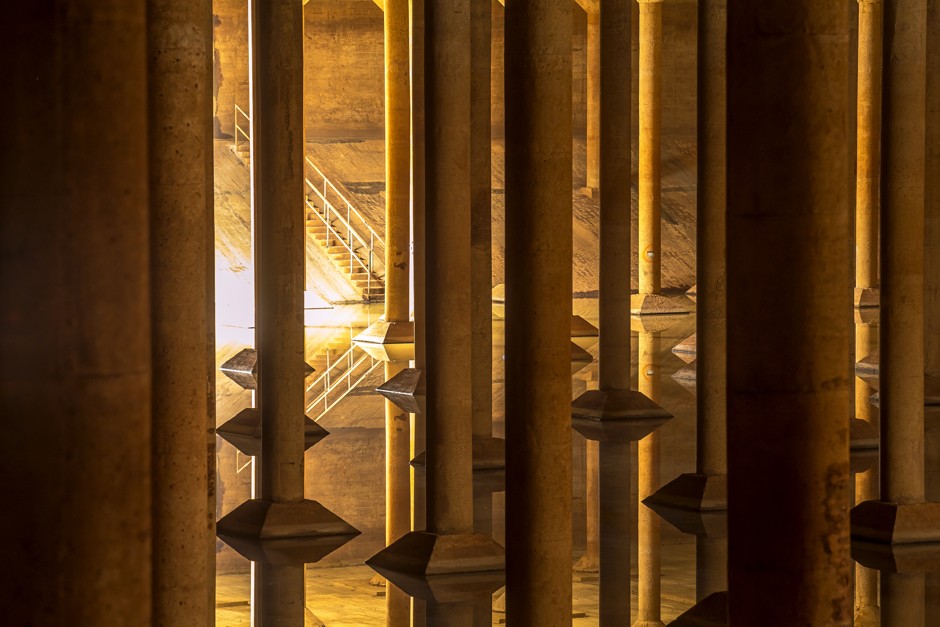“There were very few people outside the water system who knew this massive space was there.”

It took Houston less than 5 years to forget that the city has its own Mines of Moria. A sprawling underground complex of concrete and columns. A wonder to match the Roman ruins under Istanbul.
Houston built its cistern in 1926 to serve as the city’s underground water reservoir. By 
The cistern might have stayed lost, too, had it not been for two things: One, from the outside, it forms a rather prominent hill in a city that doesn’t have many. Two, the cistern enjoys pride of place near the edge of Buffalo Bayou Park, the 160-acre stretch of restored parkland that opened to great fanfare in the summer of 2015.
Houston had resolved to raze the structure when the design team behind the park got a look at it in 2011.
From our partners:
“On a really cold winter morning, we dropped down a hatch on a ladder into this space below the ground,” says Lawrence “Larry” Speck, a principal at Page and the former dean of the School of Architecture at the University of Texas at Austin. “It’s this amazing space. It’s got acoustics that just blow your mind.”

Today, the Houston Cistern is much more than an afterthought. With a $1.7 million grant from the Brown Foundation, the Buffalo Bayou Partnership decided to restore the cavernous 87,500-square-foot structure as a temple devoted to art. The Houston Arts Alliance has stepped up with programming for the space, with the first in a series of sound- and light-art installations planned for January 2017, with new artworks installed every six months.
“People scratched their heads about it, got the funding for it, and came through without terrible difficulty,” Speck says.
According to the architect, Page performed fairly minor installations to bring the cistern up to code. The firm cut a winding, accessible entranceway through the berm and added a subtle interior lighting system. Page also added a walkway and fire doors on each of the cistern’s four sides. Speck describes the firm’s work as a series of “less-is-more gestures.”
The bottom of the Houston Cistern is still covered by about 6 inches of water; the egress added by Page is the only part of the structure that can be occupied by people, which limits tours to just 30 visitors at a time. Nevertheless, Buffalo Bayou Park has registered more than 11,000 registrations for tours since the cistern opened to visitors in May.

The first art project to be hosted at the Houston Cistern, Donald Lipinski’s Down Periscope, opens up the space to viewers beyond Houston. Viewers can request control of the digital periscope and peer around the structure’s concrete columns, which number more than 220 and measure 25 feet in height.
As an arts venue, the Houston Cistern boasts its flaws as features. It’s far too dark to host most kinds of artwork. Limited egress means that viewers can’t stray from the guided path. But contemporary artists who use light in their work could use the space to dazzle. It also features incredible echoes—echoes that last for 17 seconds or longer—meaning that sound artists could put the space to work, too. Work that shows up in Houston Cistern will inevitably specific to the site.
The Houston Cistern represents an opportunity to turn aging civic infrastructure into an arena for art. It’s a trend in line with the High Line in New York or Dupont Underground in Washington, D.C. Both of those venues were derelict features overlooked by the city. They were opportunities hidden in plain sight.
“There were very few people in Houston outside the water system who knew this massive space was there,” Speck says.
This feature originally appeared in Citylab.















